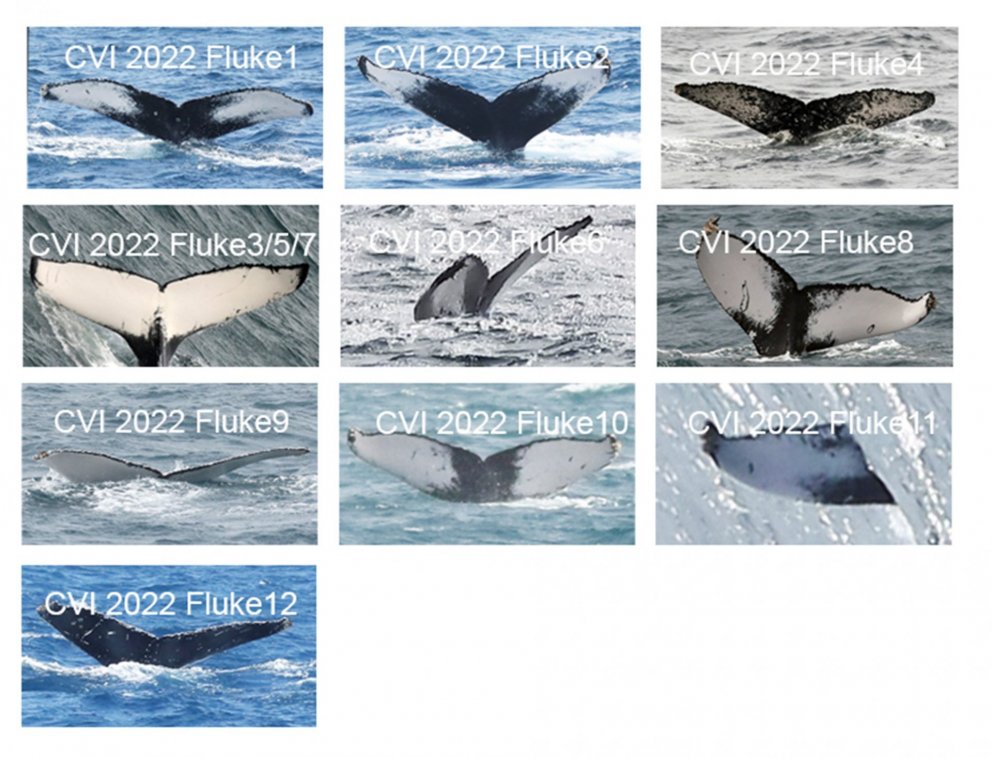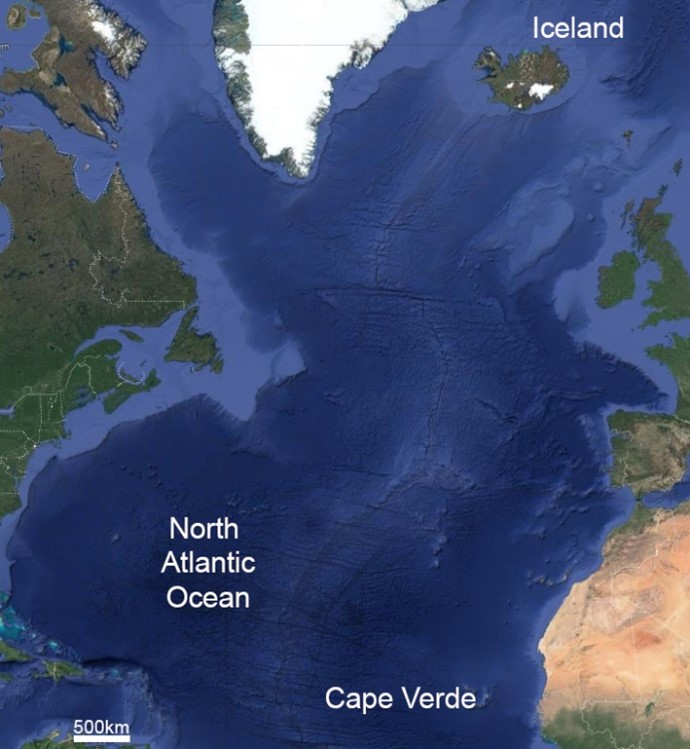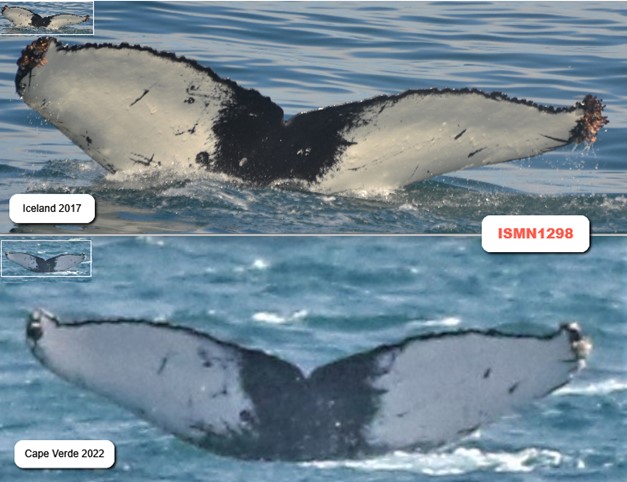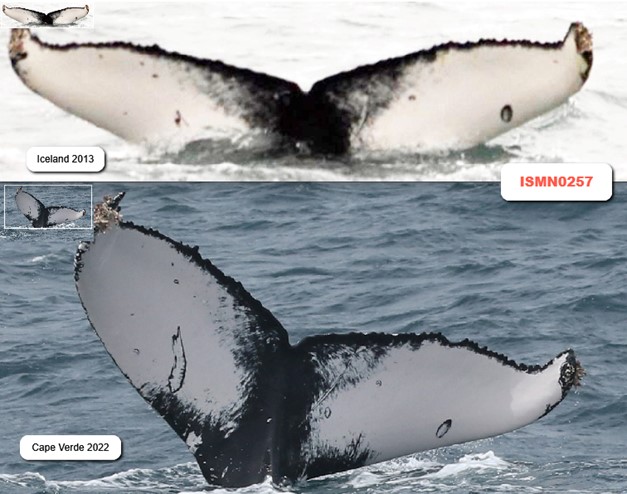- Research
- Fish tagging
- Lumpfish research
- Oceanography
- Seabed mapping
- Arnarfjörður
- Drekasvæði
- Ísafjarðardjúp
- Jökulbanki
- Jökuldjúp
- Kolbeinseyjarhryggur and adjacent area
- Kolluáll
- Langanesgrunn
- Látragrunn
- Nesdjúp
- Reykjaneshryggur and adjacent area
- Selvogsbanki
- South of Selvogsbanki
- South of Skeiðarárdjúp
- South of Skerjadjúp
- Southeast of Lónsdjúp
- Southwest of Jökuldjúp
- Suðausturmið
- Suðurdjúp
- Vesturdjúp
- East of Reykjaneshryggur
- Vestfjardarmid
- Seal research
- Whale Research
- Advice
- About
For Icelandic Humpback whales, 2022 starts with a Bang!
03. March 2022
 Figure 1. Collage of the first 10 Individuals observed and photographed in Cape Verde in 2022 (Map 1). Please note that images are copyrighted and are the propriety of the photographer and the BIOS Cabo Verde Association These photographs can therefore not be used without prior consent of the authors.
Figure 1. Collage of the first 10 Individuals observed and photographed in Cape Verde in 2022 (Map 1). Please note that images are copyrighted and are the propriety of the photographer and the BIOS Cabo Verde Association These photographs can therefore not be used without prior consent of the authors.
The humpback whale is one of the most popular marine mammals and yet a lot of things remain unknown about them. Their annual long-distance migrations between breeding grounds located in the tropical areas of the North Atlantic (from Caribbean waters to the African coast) and the sub-arctic feeding grounds can be studied by satellite tagging or by photographs identification from different areas.
This week, our Humpback whale Photo Identification specialist, Valerie Chosson, received photographs from BIOS Cape Verde of 10 humpback whales, which reached the Cape Verde breeding ground in 2022 (Figure 1).

Map 1: North Atlantic Ocean. (from Google map)
ISMN0257 and ISMN1298 in Cape Verde
Those 10 photographs were processed, analyzed, and compared to the individuals registered and identified in the ÍSland Megaptera Novaeangliae (ISMN) database (curated by MFRI). A total of 2 out of these 10 individuals had been photographed previously in Icelandic waters, in Skjálfandi near Húsavík (Figure 2. and Figure 3). This information completes nicely the currently performed studies on the long-term migration pattern and destination of the Icelandic Humpback whale which will be presented at the 24th Biennial Conference on the Biology of Marine Mammals (SMM2022) this summer in Florida.

Figure 2. Humpback Whale ISMN1298 pictures taken in 2022 off Boa Vista (Cape Verde) and in 2017 off Húsavík (Iceland)

Figure 3. Humpback Whale ISMN0257 pictures taken in 2022 off Boa Vista (Cape Verde) and in 2013 off Húsavík (Iceland)
Thanks to the amazing group of dedicated scientists, citizen naturalists, whale watching companies and diverse NGO all over the north Atlantic, the dynamics and migration patterns of humpback whales across the North Atlantic has become clearer with these photos at a minimal cost.
Today, the ISMN Catalog hosted at the Marine and Freshwater Research Institute , includes a collection of about 1600 unique humpback whale individuals from the year 1980s to date.
